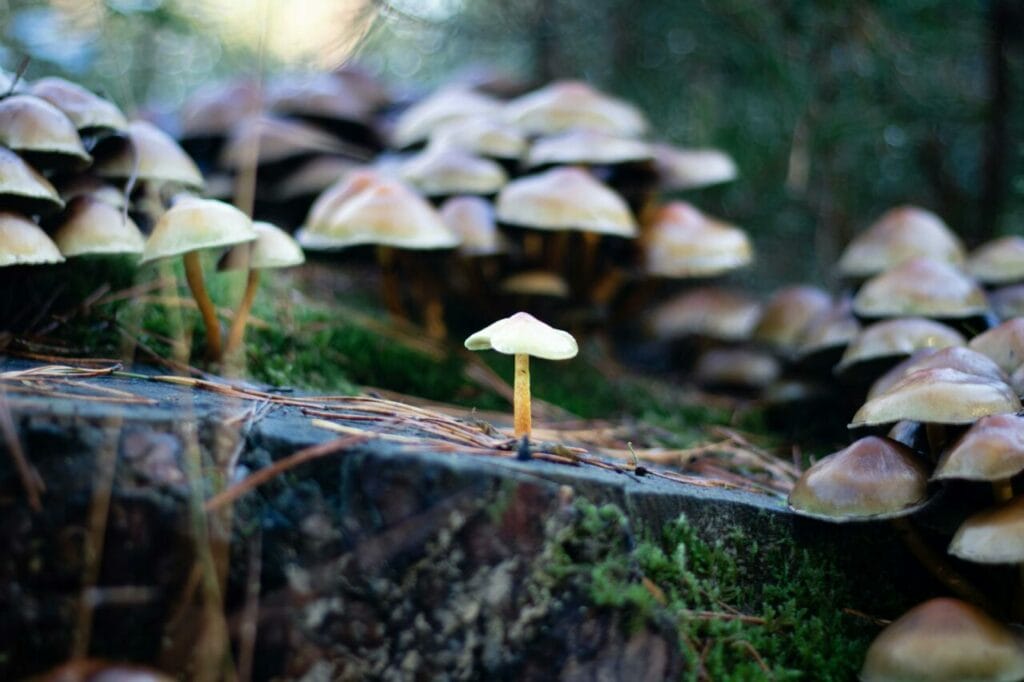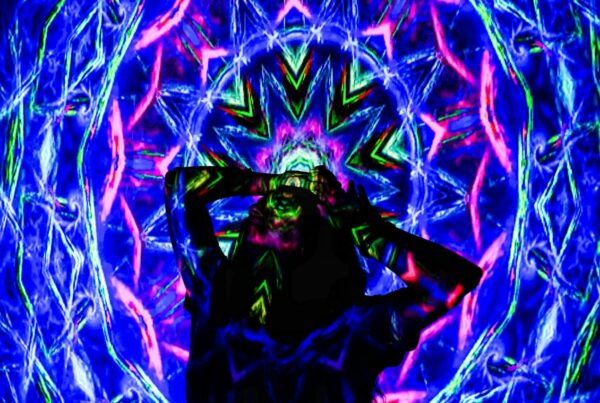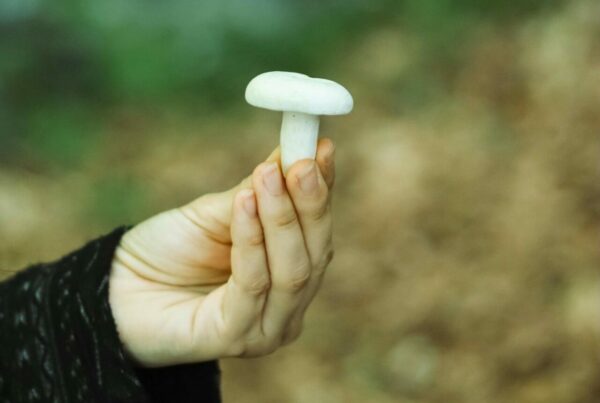Alzheimer’s Disease (AD) is a detrimental neurodegenerative ailment for which no cure has been discovered yet. Its increasing prevalence presents a considerable challenge. Researchers are investigating better treatment approaches by considering both natural and synthetic options.
Multiple clinical studies have highlighted the encouraging potential of serotonergic psychedelics, such as LSD, DMT, and psilocybin, in the treatment of Alzheimer’s disease. For further captivating information, feel free to explore online resources or contemplate “purchasing psychedelics online in Canada.”
[toc]
Psychedelics’ Role in Alzheimer’s Therapy
Conventional psychedelics demonstrate potential in treating early-stage Alzheimer’s Disease (AD) or mild cognitive impairment (MCI) by fostering the development of brain cells.
Psychedelics can potentially promote neural plasticity for learning and memory by targeting specific brain receptors. This could potentially decelerate or even counteract the neurodegenerative effects of AD. Additionally, psychedelics may help alleviate depression and anxiety, which are often linked to AD patients, by inducing positive psychological impacts.
There remain doubts about the workings of psychedelic therapies. Some suggest that profound effects from high-dose psychedelics, like mystical experiences or a sense of self-dissolution, are essential for realizing psychological benefits. Others assert that the key is in the biological changes induced by these substances. Both viewpoints may harbor truth.
Conventional psychedelics appear to aid the brain in adapting and minimizing inflammation, even at lower dosages. Consequently, low-dose treatments could benefit conditions like brain degeneration or migraines without substantial mind-altering impacts. However, for depression, anxiety, or addiction, the mind-altering effects seem vital, prompting introspection and behavioural alterations. Hence, both low and high doses deserve investigation for personalized therapy.
The Impact of Serotonergic Psychedelics
Serotonergic psychedelics, such as LSD (lysergic acid diethylamide), DMT (dimethyltryptamine), and psilocybin (found in magic mushrooms), are gaining
Psychedelics are gaining attention for their potential therapeutic effects on diverse mental health disorders.
Experts indicate that serotonin receptors, celebrated for improving cognition and regulating neuroplasticity, are an encouraging focus in Alzheimer’s Disease (AD) research.
These substances mainly cause their pharmacological impacts by modifying the brain’s serotonin system. This adjustment results in altered perception, mood, and consciousness. The following list includes findings from several studies which back this theory:
- Notably, the 5-HT2A subtype of these receptors affects the gene expression of neuroplasticity-enhancing neurotrophins in brain areas impacted by AD.
- These receptors control cortical signaling, which is essential for cognition, memory, and synaptic plasticity.
- Despite their unique distribution within neurons, serotonin receptors play a role in neural development, regeneration, and plasticity.
Significant Research Findings
- Serotonergic psychedelics show potential in reducing facets of AD pathology by promoting neuroplasticity.
- Classic psychedelics influence neurotransmission, foster synaptic remodeling, and enhance factors promoting neuronal survival.
- Specific psychedelics, such as muscimol and Sig-1R agonists, may reduce the neurotoxicity associated with AD progression.
- Classic psychedelics activate pathways in brain areas affected by AD, implying potential to slow down or reverse brain degeneration.
- Psilocybin mushrooms initiate neural plasticity to stimulate neurogenesis and cause lasting changes in brain circuits.
- Psychedelics improve brain connectivity by targeting receptor genes and instigating changes in neurons and networks.
Clinical research suggests that both classic and non-classic psychedelics from magic mushrooms affect various biological processes in the brain. These effects encompass swift alterations in gene expression and notable changes in brain structure and function.
These psychedelics interact with receptors like serotonin, sigma, NMDA, and GABA, resulting in enhanced synaptic plasticity and brain rejuvenation. Consequently, psychedelics could potentially exert positive effects on behavior, memory, and cognition, positioning them as promising candidates for treating AD and related disorders.
Buy Psychedelics Online in Canada
Welcome to our online store, your trusted source for a vast selection of psychedelic products in British Columbia, Canada. If you’re considering microdosing magic mushrooms, we recommend starting with a reputable medicinal mushroom dispensary.
- LSD
LSD is a synthetic drug derived from a fungus called ergot that grows on rye grains. This psychoactive compound, even in small quantities, can modify perceptions, emotions, and thoughts.
Excessive use of LSD can lead to severe hallucinations, distorting your perception of time and space. Be cautious, as substances sold as LSD might actually be other drugs such as NBOMe or part of the 2C drug family.
| Product | Kittease – Ketamine Microdose Troche (30x50mg) | Zenly – LSD Gel Tabs – 600ug (100ug Per Tab) | Zenly – LSD Gummies – Sour Zen Berry – 200ug (100ug Per Gummy) |
| Intended Use | Stress, depression, pain management, PTSD, OCD, work-related stress, performance anxiety, insomnia, and addiction. | Exceptional experiences | Exceptional experiences |
| Dosage | 50mg per troche / 30 per pack – 1.5 grams of ketamine/ per pack | 600ug total/6 Tabs (100ug/Tab) | 200ug total/2 Gummies (100ug/Gummy) |
| Usage Guidelines | Take one full troche | Consume one full tab to feel the full effect. Wait at least 2 hours before taking another. | Consume one full gummy to feel the full effect. Wait at least 2 hours before consuming another. |
| Benefits | Quick onset with minimal risk, increased openness, ideal for self-reflection and cognitive improvement. | Accurately measured dose for the perfect trip, lab-tested | Accurately measured dose for the perfect trip, lab-tested |
- Magic Mushrooms
Over 180 mushroom species are known to possess psilocybin and psilocin, substances celebrated for their therapeutic properties and positive impact. on mental wellness.
The impact varies based on factors like the type of mushroom, cultivation batch, intake amount, and personal tolerance. Some people prefer microdosing for gentle effects, while others ingest larger amounts for a more intense experience. The quality can also differ depending on the cultivation techniques used.
The Blue Meanies, scientifically known as Panaeolus cyanescens, are small dried fungi that flourish in warm tropical settings, typically on cow and water buffalo dung. As they grow, they develop blue spots on their surface, which led to their name.
- These fungi are abundant in psilocybin and psilocin, which are highly concentrated.
- They have a history of recreational use, especially among the Balinese people, who consume them during celebrations and for artistic inspiration.
- Due to their hallucinogenic properties, they are popular among tourists and travelers in Bali and similar places. The effects can include feelings of happiness, hallucinations, joy, and intense laughter.
- DMT
DMT, a potent hallucinogenic substance, is found in certain plants like Psychotria viridis and Chacruna. Often called the “spirit molecule,” these controlled substances can trigger deep psychedelic experiences. They offer a brief, yet intensely immersive journey characterized by colorful visual and auditory hallucinations.
| Product | Dream Machine – Vape Cartridge – DMT 1ml | Integral Alchemist – ACACIA Changa Pre-Roll | Integral Alchemist – Mimosa- 1ml DMT Vape Cart |
| Description | Explore hyperdimensional spaces with DMT. | Experience effects akin to ayahuasca, combining a mix of herbs and DMT. | Embark on a journey of mystical visions and spiritual insights with DMT. |
| DMT Content | 1g | Approximately 90mg | 1ml |
| Instructions | Preheat the cartridge and inhale | Consume the pre-roll at a pace that feels comfortable to you. | Inhale the vapor to experience immediate effects. |
| Effects | Intense hallucinations, altered state of consciousness. | Visual psychedelic experience, prolonged duration. | Spiritual awakening, euphoria, significant changes in perspective. |
| Duration | Varies from person to person | Can last up to 1 hour | Can last up to 30 minutes |
Long-Term Effects of Psychedelic Use
Current research is attempting to understand the long-term consequences of using psychoactive substances. “Long-term effects” refer to any lasting changes in cognition, emotion, or memory that occur after extended use of psychedelics, although our understanding of these effects is still developing.
The study of long-term effects of psychedelics is complex. Some studies suggest potential mental health benefits, while others indicate potential risks such as triggering psychosis.
Despite these complexities, researchers are consistently working to understand the effects of long-term psychedelic use on mental health, conducting detailed studies and monitoring individuals over extended periods to collect more accurate data.
Purchase Cannabis from a Reputable Vendor
Research suggests a substantial shift in Alzheimer’s disease treatment, with psychedelics having the potential to change the way we approach brain disorders. Experts believe that therapeutic use of these substances could entirely transform Alzheimer’s therapy, bringing renewed hope to numerous patients and their loved ones.
For premium products, opt for a certified vendor like Fungalfriend Canada. Offering a wide variety of cannabis products, including flowers, edibles, concentrates, and more, Fungalfriend Canada ensures genuine, laboratory-tested items that meet stringent food and drug standards.
Order shrooms online today.
Frequently Asked Questions
What distinguishes psychedelics from other substances commonly used in Alzheimer’s treatments?
Psychedelics differentiate themselves from traditional Alzheimer’s medications through their therapeutic approach and effects. They create new neural connections by targeting the brain’s serotonin system, leading to profound psychological experiences that foster emotional well-being.
Unlike conventional drugs that mostly manage symptoms, psychedelics are currently under review by Health Canada for their long-term benefits and holistic treatment approach, which includes therapy.
The exploration into the use
The use of psilocybin for conditions like obsessive-compulsive disorder and its safety record in terms of preventing multi-system organ failure distinguishes it from conventional controlled substances.
Can psychedelic-assisted therapy be a viable treatment for Alzheimer’s patients dealing with end-of-life distress?
Psychedelic-assisted therapy could provide significant benefits for Alzheimer’s patients who are terminally ill and confronting the reality of their approaching demise.
- Promotes emotional relief. This therapy method has been shown to reduce feelings of apprehension and melancholy in some individuals, especially those who are critically ill. This could potentially extend to Alzheimer’s patients as well.
- Typically safe under professional supervision. When administered in a controlled setting under the supervision of a qualified therapist, the use of psychedelics is generally harmless and is well accepted by most individuals.
- May enhance quality of life. For an Alzheimer’s patient, emotional improvement can make a significant impact, even if memory conditions remain unchanged.
- Further research required. Although this therapy seems promising, additional studies are needed to validate its safety and effectiveness for Alzheimer’s patients, especially those in the latter stages of their lives.
How long does a psychedelic therapy session for Alzheimer’s patients last?
- Preparation Phase. This phase includes one or two sessions, each spanning 1 to 2 hours. These sessions are intended to ready the patient for the forthcoming experience, establish expectations, and build a trusting relationship with the therapist.
- Principal Psychedelic Session. This crucial session, during which the patient consumes the psychedelic substance, typically lasts between 4 to 6 hours. The patient spends this time in a controlled setting, often lying down with eye shades on and listening to music, while being closely monitored by therapists.
- Integration Phase. After the session, follow-up meetings are held to help the patient digest and integrate their experience. These meetings usually last 1 to 2 hours each, with the total number of sessions varying.
You might also be interested in:





